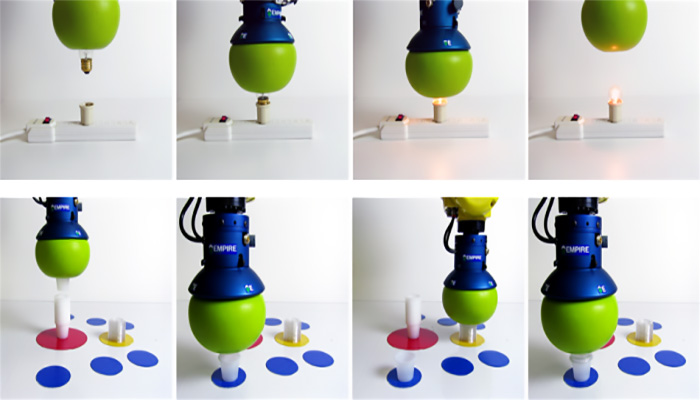Boston Startup’s Robotic Gripper Set to Revolutionize Prosthetics

Empire Robotics is a two-year-old business located in Boston. The company can trace its origins to Cornell University and engineers John Amend and Bill Culley. Empire Robotics isn’t interested in being known as a robot manufacturer. Instead, this company is a leader in the gripping devices that can be attached to the robots working in a manufacturing plant.
The company found early success with the Versaball. This product looks like a balloon, but it can use a vacuum to modify its shape, allowing it to pick up a variety of different objects. Amend described the inside of the balloon as a bean bag. When the vacuum is working, air allows this bean bag balloon to become soft and pliable like jelly. Once the air is vacuumed out, the same bean bag balloon becomes hard and can pick up an object. The result is a robotic grip much more versatile than the traditional finger or claw.
Amend, who earned a PhD from Cornell, reported Empire Robotics has already sold 30 to 40 development kits to companies in the manufacturing industry. While Amend declined to state the names of his customers, he did state all of the sales have occurred since this past January.
Manufacturing companies aren’t the only ones interested in the new robotic grip. The National Institute of Health wants to see how it can be used with a prosthetic limb, providing Empire Robotics with a $214,000 grant this past August to explore the topic. Empire Robotics is partnering with prosthetic device manufacturer Liberating Technologies for this project.
Amend explained how their prosthetic work could be of a great service to disabled people. “It would allow somebody who was doing a labor job to get back to that job. A lot of people suffer hand injuries in their work and really need to get back to their work,” Amend said.
Located in the Seaport District of Boston, the company currently has seven employees. Amend reported it has already raised an amount close to $500,000 in debt and equity funding in addition to more than one million dollars in grants.
